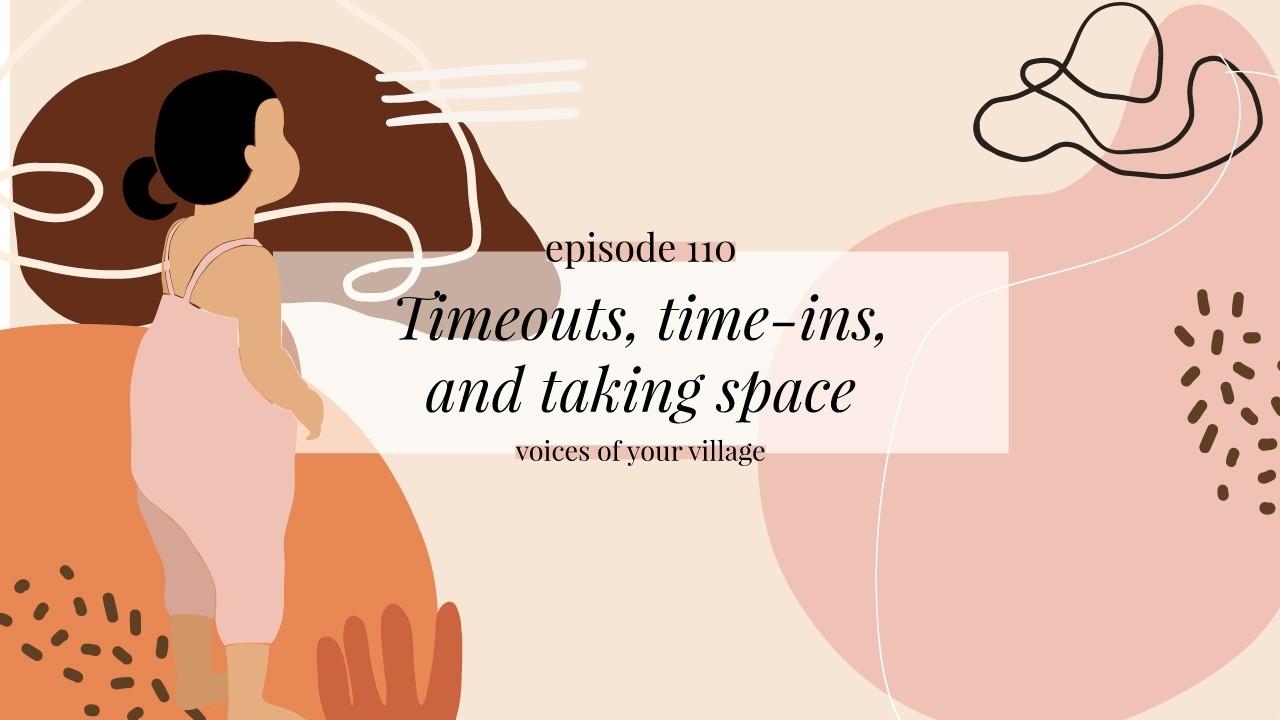Timeouts, time-ins, and taking space

Hello and welcome to the 110th episode of Voices of Your Village! Today we’re talking about everyone’s favorite hot-button issue: timeouts. This topic was first brought to light a while ago when there were a few posts in our Facebook group asking for our village’s take on time outs. This began an ongoing discussion about how we save space for our kiddos to feel things, without punishing them in a time out.
Dr. Allison Mark joins me today to really get to the bottom of this timeout discussion. Allison is a clinical psychologist based in Miami, Florida who tests children in school who have learning and attention issues and works with parents to develop their parenting skills, all the while raising her own two kiddos. She has a private practice in Miami as well as conducts online classes and sessions.
Y’all know how we are all about approaching problem-solving through emotional development, so Allison and I began up our chat by discussing the difference between taking a “time out” and “taking space”. Allison finds time outs to be removing a child from their situation for a period of time before allowing them access back to their original environment. There are a variety of circumstances where she believes it is beneficial to remove a child from a situation, and almost all of these circumstances are due to safety concerns. However, Allison is eager to point out that if a child is incredibly dysregulated and you give them a time out then their emotion will typically escalate.
“But if you give them the space to go through their dysregulated episode by supporting their needs, you’ll come out on the other side with an opportunity to connect and teach.”
Allison and I agreed that when we give our kiddos the space to think about their emotions we are giving them the power to have full control of their bodies while understanding that how they feel is acceptable.
I added that typically we will use a time out when we have no other easy solution at the moment, like when we are in the middle of cooking dinner and need a quick fix to a spurt of dysregulation. So, I posed another of your most popular timeout questions to Allison: if you don’t have the hands or time at the moment and are faced with an explosion of emotion from your kiddo, how can you respond without a time out?
“That amygdala hijack isn’t just for kids!”
Allison admits that these are complicated situations where the parent needs to remove themselves from their situation to find their calm, which has the potential to lead to forfeiting being on time to work or school that day. A timeout can feel necessary if you feel like you are dysregulated and close to exploding, and there is no shame in that. In moments like these Allison advises taking a capital T-timeout for everyone involved. Sit on the floor in a circle and breathe as a group for a moment, practicing finding your group calm as a team.
What I like about Allison’s response is the modeling of behavior. Remember those pesky mirror neurons! It is our job to bring the calm, not our kiddos. We can teach our children ways to regulate their bodies without shutting down their emotions. Instead of saying, “stop crying” we can say, “it’s okay to cry, we can talk about this but I want you to feel your feelings first.” After a little while, our kiddos feel our calm and it is soothing for them.
As caregivers, it is essential that when our kiddo is done with their timeout we are welcoming to them so in the future they will know that it is okay for them to take space and feel their feelings. Listen to the episode above to listen to our full discussion on timeouts, time-ins, and the emotional rollercoaster of life in between.
